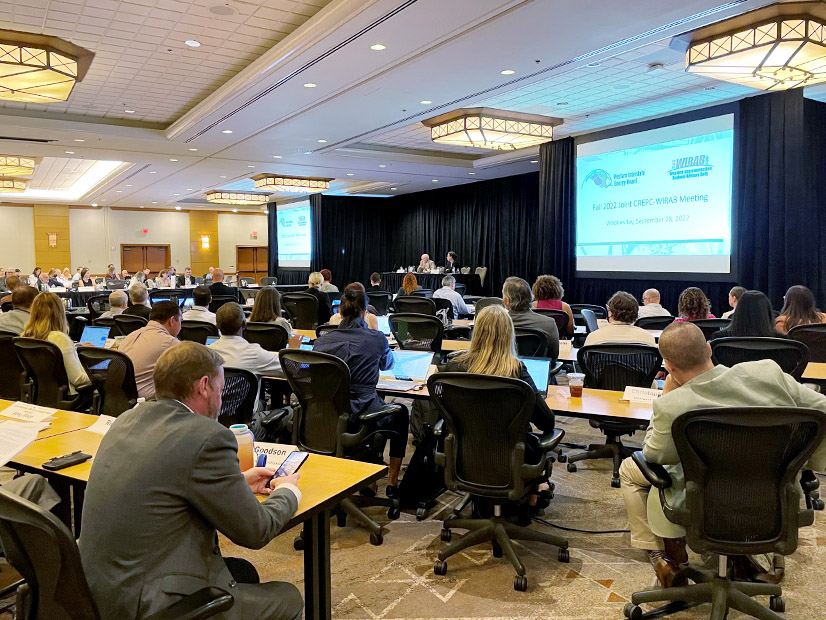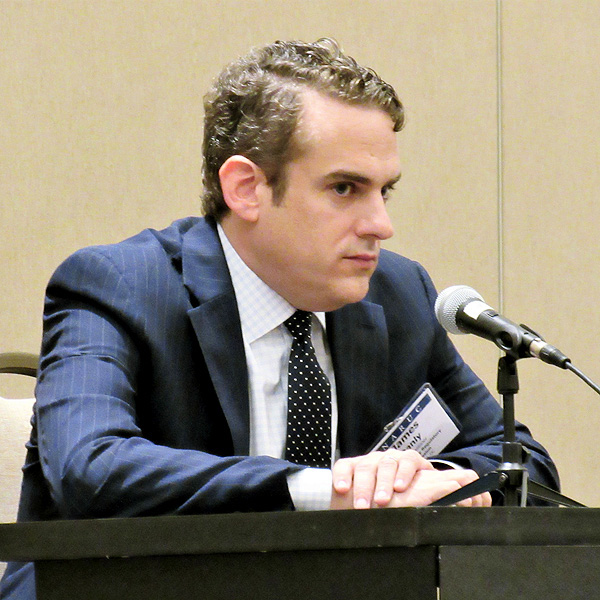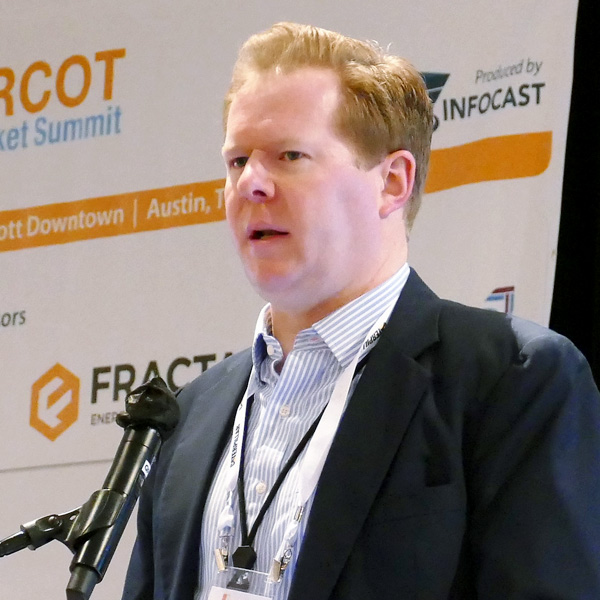The impact of growing power demand driven by the electrification of transportation and buildings is a key problem in the drive to decarbonize U.S. electricity that utilities and regulators must tackle, said Robert Rowe, president of NorthWestern Energy.
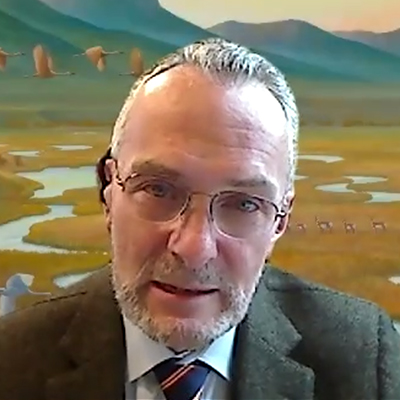 Robert Rowe, NorthWestern Energy | USEA
Robert Rowe, NorthWestern Energy | USEASpeaking at an online panel on Friday sponsored by the United States Energy Association, Rowe said U.S. utilities have already made significant cuts in their carbon emissions, but new approaches are needed for regulation and, in particular, rate structures.
The industry needs to spell out its “absolute core goals — safety, reliability, resilience, flexibility, decarbonization … as simply as possible, measurably, and then look at the regulatory mechanisms in place and ask, ‘Do they advance these goals, or do they hold you back?’” he said.
According to the Clean Energy States Alliance, 21 states, plus D.C. and Puerto Rico, have adopted 100% clean energy goals, with deadlines ranging from 2032 to 2050. Many investor-owned utilities, including NorthWestern, have followed suit, committing to clean or net-zero generation, usually by 2050.
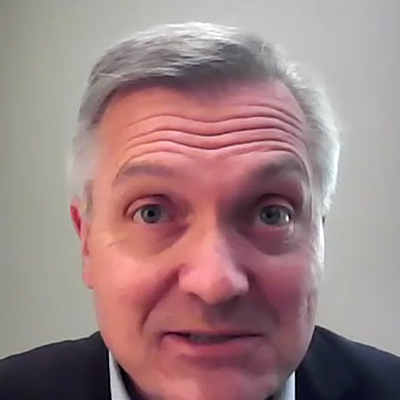 Jim Matheson, NRECA | USEA
Jim Matheson, NRECA | USEANorthWestern is “working with others on the electric infrastructure to support [electrification], whether its fleet electrification, personal vehicles, processes,” Rowe said. “There’s a lot of good in there, but the key is cost-effective electrification.”
Jim Matheson, CEO of the National Rural Electric Cooperative Association, argued that President Biden’s 2035 clean electricity goal may not be achievable “without severely compromising the reliability of the electric grid.”
“We think you have to have some form of always-available power,” Matheson said. “It could be nuclear; it could be coal; it could be natural gas. But in a situation where we need more electricity, the question is — how much of the portfolio can be an intermittent resource?”
More time, more advanced technologies and way more transmission will be needed, he said.
Bridge to Bankability
Jigar Shah, director of the Department of Energy’s Loan Programs Office (LPO), sees the challenge in terms of technology “liftoff”: the billions in upfront investment needed to bring new technologies to market.
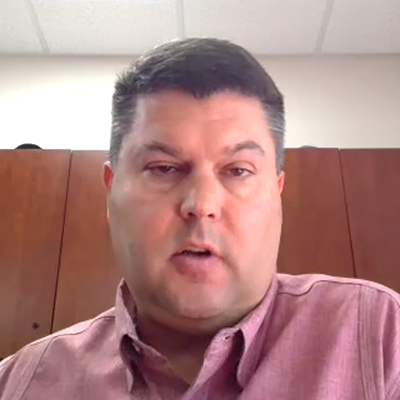 Jigar Shah, DOE Loan Programs Office | USEA
Jigar Shah, DOE Loan Programs Office | USEAThe LPO’s $465 million loan to Tesla in 2010 — and the company’s payback of the money ahead of schedule — was critical in the electric vehicle manufacturer’s buildout of its Gigafactories and the growth of the now booming EV market in the U.S.
But, Shah said, a range of industry analyses show “there are 20-plus sectors that have to cross the bridge to bankability and reach full market acceptance for us to have a chance of meeting the 2035 goals the president has set down, and right now, those 20 sectors have not crossed.”
It takes about $100 billion in investments to achieve bankability, Shah said. While he sees momentum and growing interest in hydrogen, “in sector after sector, there is an assumption that the commercial markets are ready to go, but I think, in general, they’re really only interested in solar, wind and some battery storage.”
Rowe added that beyond technology risk, developing the ecosystem of supply chains, workforce and permitting will layer on more uncertainties. “Getting all those pieces together, like every transition, it’s messy; it’s complicated; it takes longer than you might have thought at the start,” he said. “But when you look back, you may have accomplished more than you actually did.”
 David Naylor, Rayburn Electric Cooperative | USEA
David Naylor, Rayburn Electric Cooperative | USEAHaving a diverse generation portfolio and finding ways to leverage existing transmission and distribution systems were seen by other speakers as familiar, low-risk strategies to move decarbonization forward in the near term.
David Naylor, president and CEO of Rayburn Electric Cooperative, a transmission and generation cooperative in northeast Texas, said his co-op is going “low-tech” by upgrading its conductors “to utilize existing rights of way but get more throughput.”
At the same time, the co-op plans to increase its use of renewable power, from 5% in 2020 to 31% by 2025, according to its website. Other electric cooperatives, which often don’t have to obtain the regulatory approvals required of IOUs, have adopted more ambitious clean energy goals.
New Mexico’s Kit Carson Electric Cooperative this year hit its goal of providing 100% of its daytime power from solar, while keeping rates low.
Grid Management 2.0
Energy efficiency and demand response will become integral tools in grid management and modernization, but Rowe sees a potential obstacle in designing electric rates that encourage grid efficiency.
“Does it make sense to pay for that [efficient] infrastructure volumetrically?” he said. “It’s a little bit like you’ve got one foot on the brake — efficiency — and one foot on the accelerator — volumetric pricing — and you need a one-pedal operation. Where do you try to harmonize?”
Demand management will also be critical for integrating power to meet the increasing demand from EVs, said Matthew Lind, director for industry consultants 1898 & Co., a part of Burns & McDonnell.
He pointed to efforts by Edison Electric Institute to “bring together the electric retail provider and technology companies to develop different kinds of strategies. Demand response and time of use are necessary, but not sufficient. … The size of the resource, the ability to access that resource is going to vary pretty tremendously from area to area, depending on the nature of the demand.
 Matthew Lind, 1898 & Co. | USEA
Matthew Lind, 1898 & Co. | USEA“The ability to curtail that demand on the electric side may be challenging as we further electrify other sectors of the economy,” Lind continued. “But diversity of technologies — demand response being one of those technologies — will allow for reliability and, hopefully, affordability as we make this transition.”
Rowe also cautioned that demand growth encompasses more than capacity. “Even using relatively conservative assumptions about growth, there are some significant capacity challenges on our system, and if growth exceeds that, then we have to redouble our efforts,” he said. “Capacity is not simply a supply concept. It’s how much reserve, how much [flexibility] do you need in all aspects of your system, and what’s the cost and what’s the value of that?”
Shah foresees transportation electrification driving a more radical transformation. Citing figures from Wood Mackenzie, he predicted that by 2030, the U.S. would have about 100 GWh of utility-scale storage on the grid. He also estimated that batteries in passenger and other light-duty EVs could provide as much as 800 to 850 GWh of storage.
“To suggest that this is something other than a mainstream grid operations exercise is ridiculous,” he said. “This will literally become the next way you manage the grid; even if you decide not to pull any power out of the [EV] batteries, that’s V2G [vehicle to grid]; even if you just do managed charging.
“I just think that people are using the model of last year to predict the model of 2030, and they’re just getting it woefully wrong,” he said.
‘Do Big Things’
The energy transition in the U.S. has hit a push-pull stage.
The Infrastructure Investment and Jobs Act and the Inflation Reduction Act provide strong support for clean energy buildout, such as the IRA’s direct-pay provisions that for the first time allow co-ops and municipal utilities to access a range of clean energy tax credits.
But 20 states now have laws prohibiting local jurisdictions from banning natural gas hookups in new construction, and six more are considering similar laws, according to S&P Global.
Rowe said conservative states, like the three in NorthWestern’s service territory, prioritize reliability and affordability and make investments in decarbonization based on those priorities.
“I am very uninterested, deeply uninterested in the kind of polarizing discussions where everybody takes their ideological position,” he said. “On the other hand, everyone is truly concerned about the various severe weather events, truly concerned about resilience. … I wish we could find a broad space where we can agree, and then focus on the most efficient ways to get there.”
Shah sees electrification as an unstoppable process. Banning bans on natural gas hookups may slow but won’t stop the shift to air- and ground-source heat pumps, he said, noting that they are now being installed in 38% of new homes, according to the National Association of Home Builders.
“You don’t replace natural gas in these applications through sacrifice; you replace it through better technology, and people generally like heat pumps a lot better than using natural gas for heating,” he said. “Now we’ve got to train HVAC contractors; we have to train the supply chain. We have to do all the hard work to make sure the transition occurs, and consumer preferences are honored.”
The speed of the energy transition and demand growth, and the need for the industry to stay in front of both will be a core challenge moving forward, he said.
“People have been used to being able to just use their existing infrastructure for longer without really thinking about how to add more infrastructure, but America’s got to be able to do big things again,” Shah said. “We have the right people; we have clearly all the technology, and the question becomes how do we really do big things again? We know how to do this; it’s a human issue around how we move faster, how we move more confidently and then how we export those solutions to the rest of the world.”
